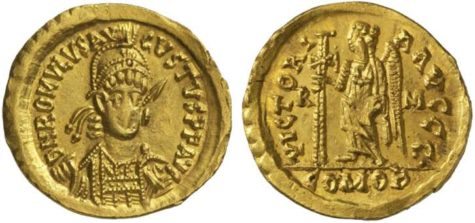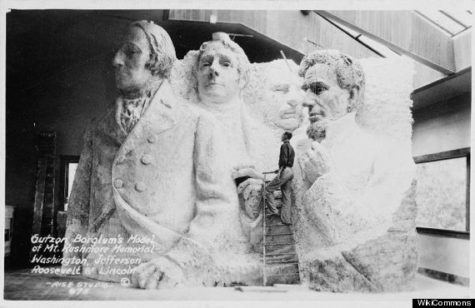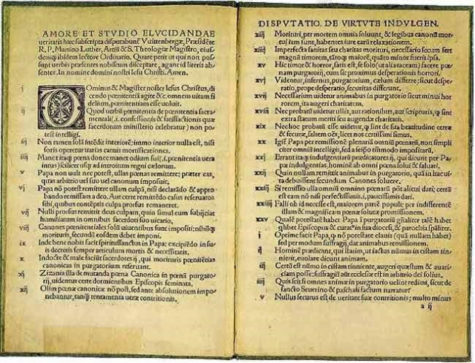9.5 things you didn’t know happened on October 31st
Halloween isn’t the only reason you should be celebrating on October 31st this year.

An artist’s depiction of Martin Luther nailing his 95 Theses to the church door.
October 30, 2017
Everyone loves Halloween; it’s a time when they can dress up in fun costumes, eat candy, and adorn their houses with spooky decorations. Many Halloween fans find themselves counting down the days until October 31st. However, Halloween isn’t going to be the only special thing about that date this time.
This year, the last day of October will mark the 500th anniversary of the day Martin Luther posted his 95 theses (his qualms with the Catholic Church).
It seemed appropriate to honor the event with a list of 95 things that happened on the same date, but 95 is much too big a number, so here are 9.5 things that happened on October 31st.
1. Martin Luther posted his 95 theses. You should have seen this coming. This event makes the top of the list due to its prominence this year. Almost exactly 500 years ago, in 1517, Martin Luther, a catholic priest, nailed a piece of paper containing his 95 theses to the door of the Castle Church in Wittenberg, Germany. These theses described Martin Luther’s main problems with the Catholic Church, including their practice of selling indulgences, a “ticket” someone would buy to get a relative out of purgatory or ensure that they never get stuck there themselves. This one piece of paper was the catalyst for the Protestant revolution, which has effects that can still be seen today.
2. The United States admitted Nevada as a new state. In 1864, Nevada, despite having 20,000 fewer citizens than was required for a territory to reach statehood, was admitted by Congress as the 36th state of the United States. It’s admission was mostly due to the influence of powerful eastern capitalists, who wanted to take advantage of a large silver deposit called the Comstock Lode, which had been recently discovered in the area. This new addition to the country, which was largely Republican dominated, gave President Abraham Lincoln the extra support he needed to pass the 13th amendment to the U.S. Constitution, which officially banned slavery.
3. The Third Battle of Gaza was fought. Early in the morning on October 31st, 1917, the Third Battle of Gaza, a battle on the Eastern front of World War I, began when Allied forces under General Edmund Allenby launched an attack against the Turkish forces at Beersheba, Palestine. The battle was won on the same day when the Allied forces captured Beersheba and its important water supply. This victory paved the way for the Allies to take Jerusalem later that year in December.
4. Romulus Augustus was proclaimed Western Roman emperor. In the year 475, Romulus Augustus, more commonly known as Romulus Augustulus, became the last emperor of the Western half of the Roman Empire. His reign lasted less than a year, and his deposition by Flavius Odoacer marked the end of the Western Roman Empire and the beginning of what is known as the Middle Ages in Europe.

5. A German U-boat sank the USS Reuben James. The Reuben James was an unremarkable 22-year-old warship, used to carrying out low stakes operations, which had been assigned to protect supply shipments on the Atlantic after the start of World War II. However, it became famous when in 1941, a month before the attack at Pearl Harbor, it became the first U.S. Navy ship sunk during the war.
6. Orson Welles commented on the panic caused by War of the Worlds. On October 30th, 1938, The broadcast of Orson Welles’s War of the Worlds caused a nationwide panic. The radio broadcast, adapted from Welles’s novel of the same name, which told the story of a Martian invasion, was believed by many people to be real due to its realistic sound effects and good actors. Many highways were clogged as people tried to escape “Martian invaders.” The panic finally subsided when Welles reminded listeners that what they were listening to was only fiction. The next day, on October 31st, Welles expressed regret that his story caused such panic and surprise that so many people actually believed that Earth was being invaded by aliens from Mars.

7. Empress Irene was deposed and banished from the Byzantine Empire. Empress Irene, also known as Irene of Athens, became the leader of the Byzantine Empire when her husband Leo IV died. Since her son Constantine was too young to rule at 10 years old, she took her husband’s place as emperor. She is best known for supporting the restoration of the use of icons, which had been prohibited earlier, patronizing monasteries, and being a saint in the Greek Orthodox Church. However, in 802, she was deposed and exiled to the island of Lesbos where she died a year later.
8. The Adventures of Sherlock Holmes was published. In 1892, Sir Arthur Conan Doyle published The Adventures of Sherlock Holmes, the first of a series of collections of stories about the detective Sherlock Holmes which Doyle had published separately in The Strand magazine. The titular detective of his stories was partly based on Joseph Bell, a teacher Doyle met while he was studying medicine at the University of Edinburgh. Doyle would later go on to publish four more collections of Sherlock Holmes stories, including The Memoirs of Sherlock Holmes and The Return of Sherlock Holmes.
9. Leiden University Library opened its doors for the first time. After the Dutch revolt against the Habsburgs in the 16th century, the Netherlands had developed a new identity. Soon, the people felt the need for a center of higher learning, and Leiden University was founded using money confiscated from a nearby Catholic monastery. The people felt that a library was also needed, so in 1587, the Leiden University Library was built. It soon became a center of enlightenment learning and is still open today, containing a large collection of texts, drawings, maps, letters, and photographs which contain information on a wide array of topics.

9.5. Mt. Rushmore was “completed.” Finally, the half-event on this list is the “completion” of Mt. Rushmore. Originally, the carvings of the four presidents were supposed to include their bodies, but workers were forced to stop once they had finished the heads in 1941 due to lack of funds. Thus, Mt. Rushmore still remains incomplete, as the four presidents are still missing their bodies today.

In conclusion, Halloween hasn’t only been a fun holiday over the years; it has been the date of many historical events. This year, while you put on fun costumes and munch on candy, don’t forget that it’s the 500th anniversary of the 95 theses as well as the anniversary of many other important historical events.





































































Sharmila Yathiraj • Oct 31, 2017 at 11:57 am
Interesting and well written Kassandra! Good job!
Jeannine Elisha • Oct 30, 2017 at 2:55 pm
Surfer and motivational speaker, Bethany Hamilton’s arm was bitten off by a shark on Halloween 2003.